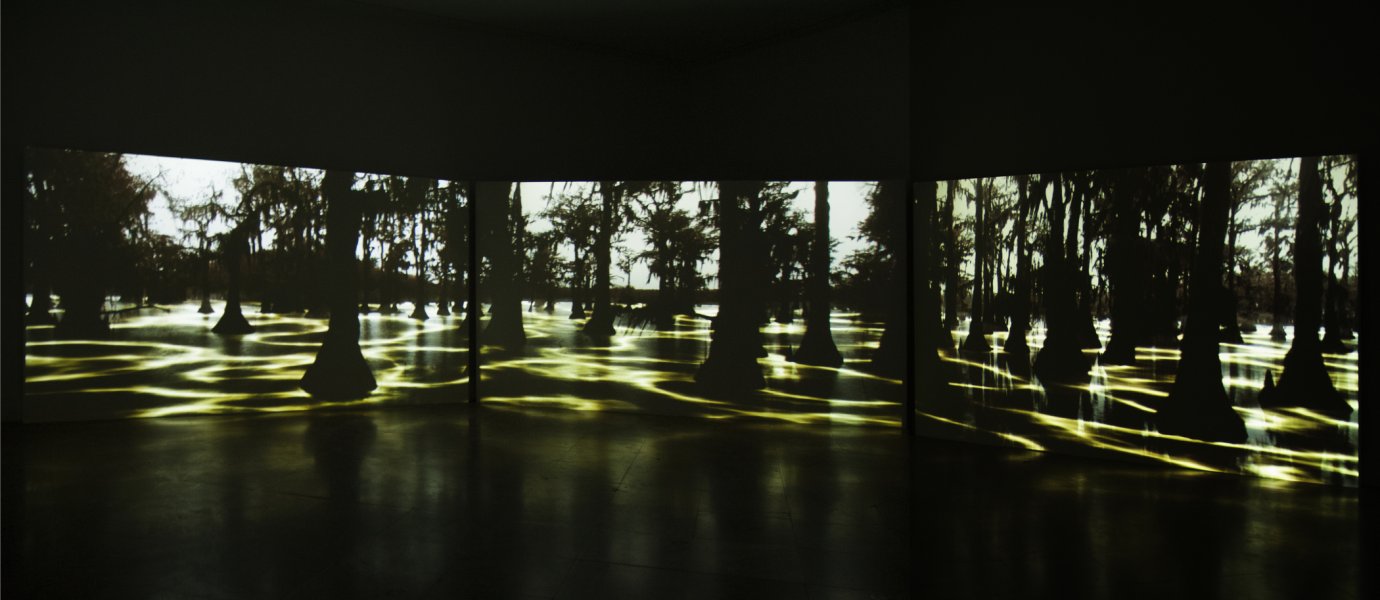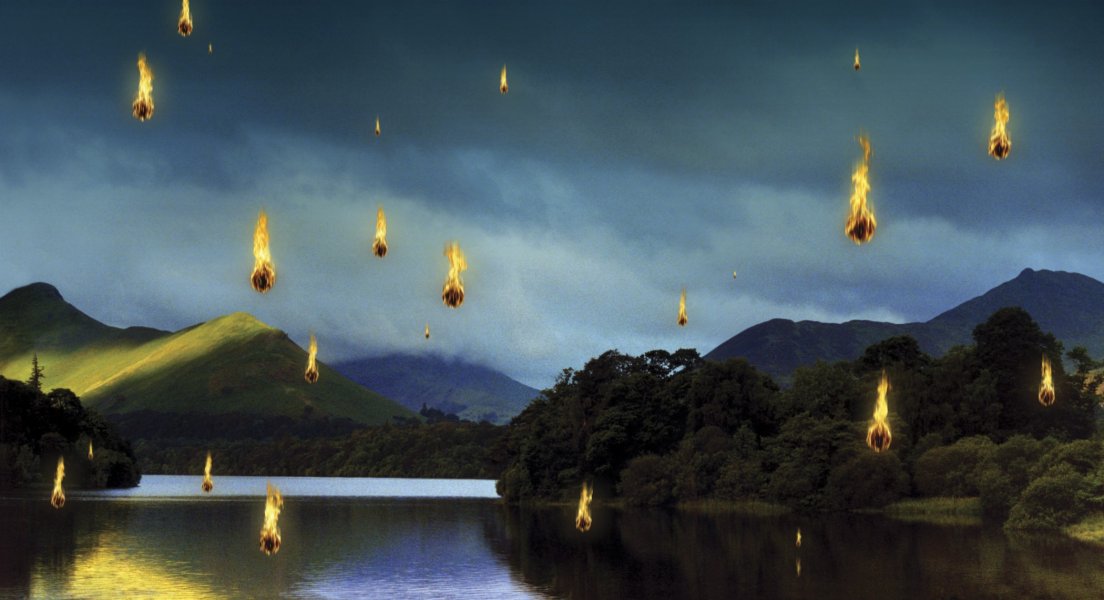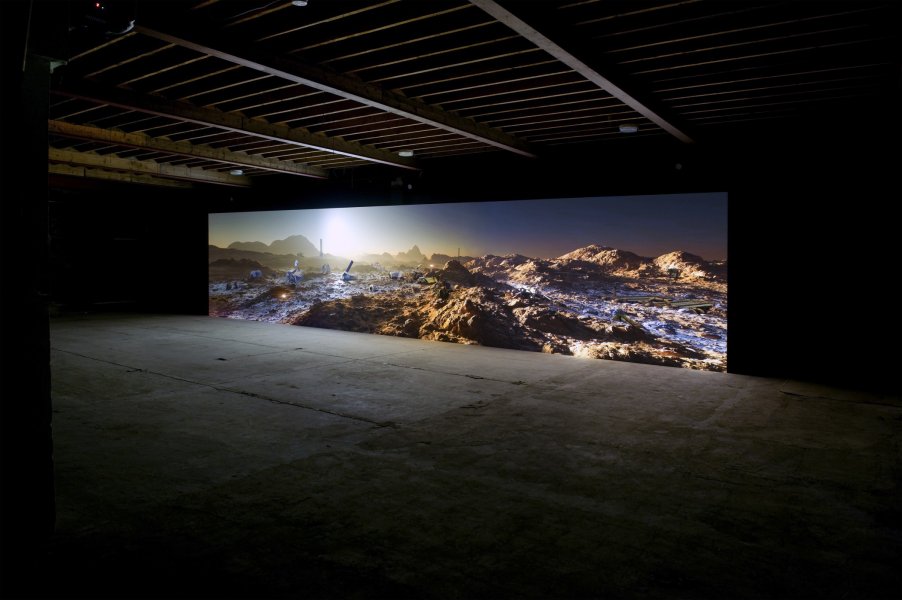Kelly Richardson: Legion
Saturday, February 16, 2013–Sunday, June 9, 2013
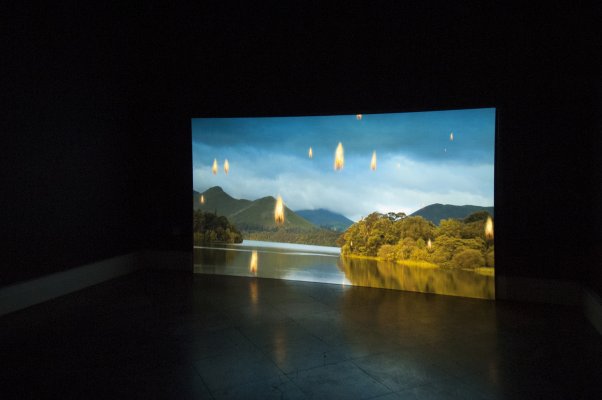
Installation view of Kelly Richardson: Legion, featuring Richardson's Exiles of the Shattered Star, 2006. Photograph by Tom Loonan.
1905 Building and the Gallery for New Media
In her work, Kelly Richardson (Canadian, born 1972) explores the “hyper-real,” a notion that, due to our increased use of new media and forms of simulation, we can no longer distinguish the real from the constructed. Richardson is fascinated by the ways we connect with landscape; within her deeply layered practice, she draws on narrative devices used in science fiction and B-movie horror films, as well as 19th century landscape painting, with particular interest in the apocalyptic conjurings of John Martin (British, 1789–1854). The results are complex cinematic installations that present us with seemingly “real” locations subtly doctored with technology, animation, and sound. These unsettling portals into otherworldly atmospheres lack any physical human presence, but suggest the residual effects mankind has had on the natural world. Hauntingly poignant in their post-apocalyptic beauty, Richardson’s installations are a resurrection of The Sublime—playing on our greatest fears through awe-inspiring visuals that offer us a rare glimpse into what the future may hold.
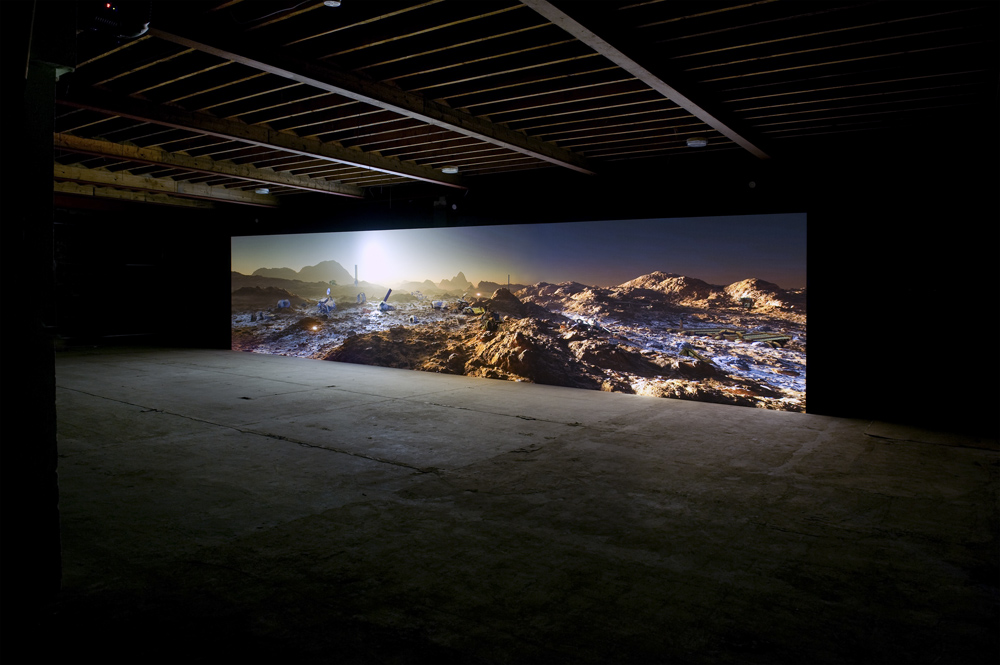
Kelly Richardson: Legion was a major mid-career survey exhibition that took an extensive look at Richardson’s audio-visual installation works of the past 15 years. The project, initiated by curator Alistair Robinson, debuted at the Northern Gallery for Contemporary Art in Sunderland, England, on July 5, 2012, coinciding with the premiere of Mariner 9, 2012, a major new three-channel video installation commissioned by the Pixel Palace at Tyneside Cinema in Newcastle, England. The exhibition, now on view at the Grundy Art Gallery in Blackpool, England (October 13, 2012–January 5, 2013), traveled to the Towner in Eastbourne, England (January 19–March 31, 2013); the Albright-Knox in Buffalo (February 15–June 9, 2013); and the Contemporary Art Gallery in Vancouver (late 2013–early 2014). A major catalogue co-published by the Northern Gallery for Contemporary Art and SAAG (Southern Alberta Art Gallery), with essays by Robinson, Hirshhorn Museum and Sculpture Garden Associate Curator Kelly Gordon, and Albright-Knox Curator for the Collection Holly E. Hughes, was available in January 2013.
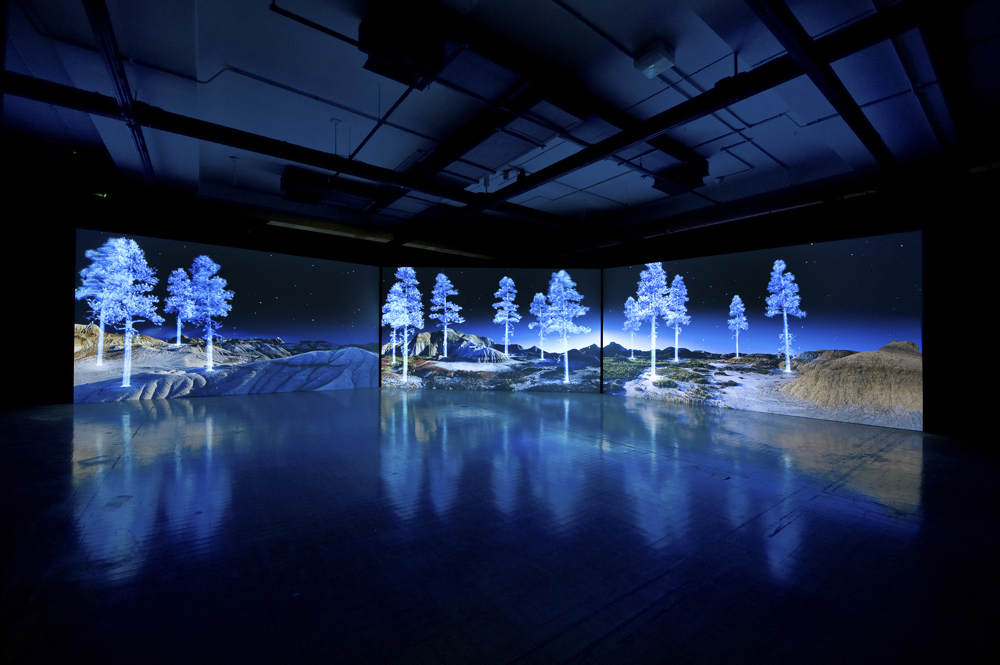
Organized by Hughes, the Albright-Knox’s version of the exhibition was the largest and most comprehensive presentation of Richardson’s work on the tour and to date. The museum currently holds the most works by the artist in a museum, having acquired three of her video installations since 2008. Featuring approximately 15 works by the artist spanning the entirety of her career, the exhibition at the Albright-Knox also served as the United States debut for Mariner 9, 2012, which received accolades and critical acclaim since its initial presentation in Whitley Bay, England, earlier that year. Educational programming—including a science fiction film festival curated by Hughes with the artist—accompanied the exhibition.
This exhibition was organized by Alistair Robinson and Albright-Knox Curator for the Collection Holly E. Hughes.
Exhibition Sponsors
This exhibition was made possible, in part, through the generous support of Arts Council England and Canada Council for the Arts. The presentation in Buffalo is made possible, in part, by Mark McCain and Caro MacDonald, The Advantage Company, and ArtAV.
This exhibition was made possible, in part, through the generous support of Arts Council England and Canada Council for the Arts. The presentation in Buffalo is made possible, in part, by Mark McCain and Caro MacDonald, The Advantage Company, and ArtAV.


